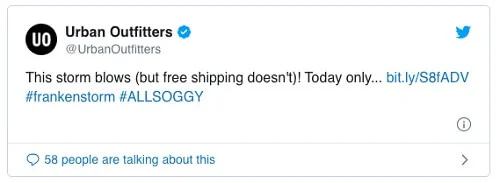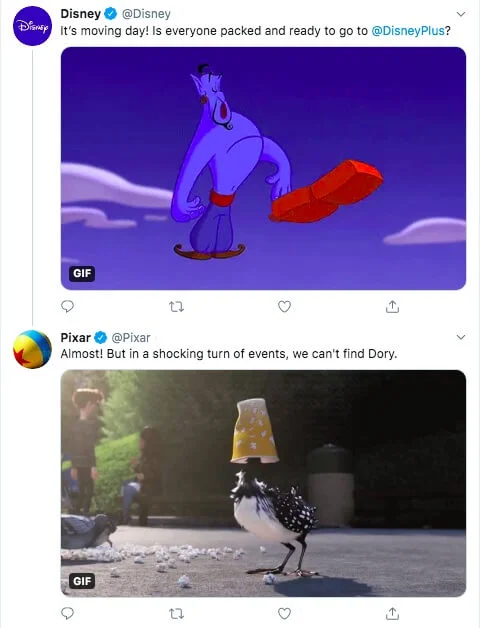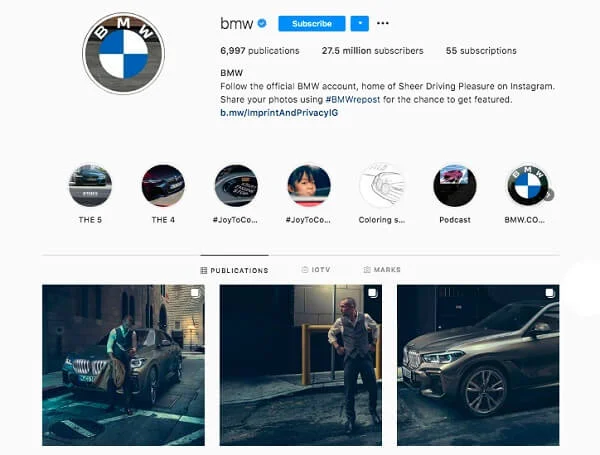As a business on social media, you need to think carefully before you hit publish. These days, it’s inexcusable to allow bad manners, poor behavior, and forgotten etiquette. All the issues become amplified when you take into account the wide global reach of social media.
This article will pinpoint the exact rules that any modern business with an online presence must follow. We’ll give actionable recommendations as well as explain the do’s and dont’s for major platforms.
Key takeaways
|
What Is Social Media Etiquette (Netiquette)?
Just like etiquette is a customary code of polite behavior in society, netiquette is a code aimed to maintain manners on the Internet. The netiquette definition covers all facets of the online world, including email, messengers, social media, multiplayer gaming, and other types of online communication.
The general idea behind netiquette rules is to respect others online. For example, you shouldn’t share personal information, photos, or videos that another person wouldn’t want to be published. You should also thank others for helping you.
Social media etiquette is a subset of netiquette that aims to preserve the reputation of companies and individuals on social media. The demands of social media etiquette differ from one platform to the next, which is why you should also abide by platform-specific guidelines. There are plenty of netiquette examples in social media, such as avoiding spammy comments, giving credit when sharing content, and maintaining a respectful tone in discussions.
Why Is Social Media Etiquette Important for Businesses?
There are unspoken social media rules that technically aren’t mandatory. But for businesses, whether you follow these rules could mean the difference between profit and loss. If you want your social media marketing efforts to pay off, etiquette shouldn’t be overlooked. Understanding netiquette in social media helps businesses avoid common pitfalls and create lasting positive impressions.
Why is it important to understand the rules of engagement in social media? Here are a few reasons:
- Prevents reputational damage – Your audience will see your brand as a respectable, professional business that knows how to handle social media and follows proper netiquette in social media.
- Gives your staff clear guidelines – Your team will be informed on what conduct is expected from them online: for posting content, interacting with users, or defending your organization. These are often called netiquette rules for social media.
- Attracts followers and brand advocates – People are more likely to follow and support a company with a carefully crafted social reputation.
- Protects against legal and security issues – Rules of netiquette aren’t only about being polite. They also help businesses stay compliant with privacy and copyright laws and understand key aspects of netiquette about social media.
There have been several cases of social media fails following Hurricane Sandy. Most notably, Urban Outfitters and Sears took serious criticism for sending insensitive tweets and trying to capitalize on the wake of destruction.


Both brands had to delete the tweets and issue an apology. Interestingly, Urban Outfitters’ stock price dropped from $28 to $13 in a matter of months, which might have been prompted by the controversial tweet.
As you can see, even big brands can fail to understand how their careless campaigns could damage their businesses. UO and Sears eventually managed to rebuild their reputations, but neglecting netiquette guidelines so outrageously can cost smaller businesses everything.
15 Basic Rules of Social Media Etiquette for Businesses
Now that we’re on the same page about the importance of social media etiquette for businesses, let’s make our way to practical recommendations. These are easy to apply and require no investments. The points below are netiquette rules for social media that work for every industry and on every social platform.
1. Understand the Current Issues
Keep tabs on what’s happening in the world and sensitively express your opinions. In other words, read the room. If you say the right things at the right time, it will have a positive impact on customer sentiment.

Many brands have commented on the Black Lives Matter movement. For example, Marc Jacobs showed their support through an Instagram post. But even for any other business, whether they support the movement or not, posting content that is irrelevant to current events would read as insensitive and drive customers away.
2. Don’t Overuse Automation
Too much of anything is usually not the best idea, but using automation as your only tactic of posting can quickly lead to overuse. At times, planned posts are a great way to save time and optimize your posting schedule. However, you should also be spontaneous, add photos and commentary to social media on-the-fly, to stay relevant.
3. Respond Quickly
53% of survey respondents expect a response from a brand within an hour for regular questions. For complaints, however, the number jumps to 72%. So, make sure to have a team member responsible for reacting to both positive and negative feedback. Otherwise, the situation can quickly get out of control.

Best Buy Customer Support did a great job of responding within half an hour to a potential customer on Twitter. They quickly sent an encouraging tweet and, as a result, the communication resulted in a real-life purchase.
4. Be Respectful Towards Competition
Bantering with other brands seems to be a popular practice these days, but it can leave the wrong impression. For many people, trashing others is not a sign of honorable behavior. Instead, show that you respect other companies within your industry. Taking the high road will win you more fans, more likes, and more business.

Two companies – Disney and Pixar – had this fun interaction on Twitter. Both promoted animation films that each studio produced, but it still led to a heart-warming conversation with no hint of rivalry.
5. Beware of Too Many Hashtags
The tasteful use of hashtags is a useful tool for attracting potential customers to your page. But if there are more hashtags than actual text, they bring no value and only make you seem desperate. Also, avoid spamming popular hashtags, like #love, #happy, and #dog. Hashtags that are specific to your audience and have an engaged community behind them are the way to go.

On February 14, Domino’s posted a photo with a concise description and only one hashtag. They could’ve flooded the post with multiple seemingly relevant hashtags for better reach. But instead, they made a much better decision to keep it simple and shareable.
6. Avoid Oversharing
It’s easy to post on social instantaneously, without giving it much thought. However, is this really necessary? Make sure new content adds to your narrative and meets your business objectives. Your customers don’t need to know everything about your brand – sometimes, less is more.
7. Be Proactive, Not Reactive
Spot the problems as they are forming. But even if you notice that the situation is becoming aggravated, never get involved in a social media spat. Communicate with online users in the same manner that you would if they came to your store.

You might’ve seen examples where brands were almost annoyed at a customer sharing a complaint. At the very least, some of them aren’t helpful. This isn’t the case with Zappos. Despite the user not being welcoming to their offers, they didn’t snap back.
8. Know Who to Follow
Your follower list also represents your brand. Just like you don’t want to be posting and reposting mindlessly, you don’t want to dilute your brand with thousands of followers. You shouldn’t only focus on the number – who and what those accounts are also matters. These give your brand context and set the general tone.

Coca-Cola’s ‘following’ list on Instagram is filled with great initiatives like food banks and non-profit companies. This conveys the message that the corporation isn’t only after monetary profits but is also interested in helping global communities.
9. Give Credit Where Credit’s Due
Before reposting content from other accounts, ask for their permission to share and be ready to take no for an answer. To give credit, you can simply add the owner’s username in the caption to show that the image belongs to someone else.

Starbucks has a regular practice of reposting user content. When doing so, they always tag the original creator of the photo. It sets a bad tone to repost images without acknowledgment, and the Starbucks social media team never breaks this rule.
10. Consider the Tone
Your brand personality can be described in an adjective. Make sure it’s not bragging, complaining, retorting, or venting. Instead, go for lively, positive, or professional. If you’re often making snarky comments, it will drive people off.
11. Use Safe Humor
Using humor is great, but you should be mindful not to insult your audience or sound offensive. Also, you can incorporate pop culture phrases but not without fully understanding their meaning. There have already been some mishaps with “Netflix and chill” and phrases like that.

Innocent Drinks is a good example of how to use humor on social media. Their jokes are ridiculous but not too edgy. Not all types of humor translate well in written form and for a large audience, but this one is pretty safe and family-friendly.
12. Know the Specifics of Each Platform
Not all content needs to be shared everywhere. Customizing content for each platform is part of netiquette in social media, and it shows attention to detail. For example, if you compare Twitter, Instagram, and Facebook accounts, you’ll notice that brands post entirely different things on each platform. It’ll be clear if you recycle Twitter content on Facebook. But it’s not necessarily a drawback – you can maximize the opportunities of each medium in unique ways.
13. Check Grammar and Spelling Before Posting
You can get away with the odd mistake here and there. But if you keep making silly grammar errors, you might soon see your follower numbers fall through the floor. At the very least, you’ll be known as an unprofessional account. Brands publish tons of content every day, and only those that are highly polished and well-structured will stand out.
14. Keep Your Feed Tidy
Spare your followers a flashy, mismatched feed unless it’s your brand aesthetic, and you’re making this decision deliberately. Once again, it’s not a requirement, but a coherent feed will attract more followers.

BMW maintains a color story and organizes the highlights. Even these two simple things make the account aesthetically pleasing. Interestingly, images vaguely even feature the same color as the logo. As for companies with lower funds that don’t match what BMW has, they can also arrange a neatly looking feed effortlessly.
15. Don’t Be Needy
Never beg for likes, comments, and other types of engagement. Not only does it not work, but it also annoys the audience and puts the account on the platform’s blacklist. Facebook even began clamping down on “engagement bait” across its social network. If the content doesn’t get enough engagement, it means that you should be directing your effort toward improving it rather than making your audience do the work.
Facebook Etiquette
The casual community of Facebook makes engagement with others feel natural. However, the audience here tends to get heavily into politics. The Facebook etiquette dictates that you should always show respect, especially when discussing or posting about politics. These guidelines are especially important for maintaining social media business etiquette.
Also, a common mistake is to cross-post between Facebook and other social platforms. These days, it’s considered bad taste, so turn off automatic posting.
Instagram Etiquette
Instagram is the perfect place to share something visual, which is why most etiquette rules cover photo content. Take high-quality photos and edit them outside of the app – posting grainy, blurry, and overall unprofessional pictures won’t pass according to the Instagram etiquette.
Location tag other businesses to show courtesy as well as other accounts you feature on your page. Never include direct links since they aren’t clickable on Instagram, and you’ll just annoy your followers. Lastly, help more than you sell – 80% to inform, educate, and entertain, 20% to promote – otherwise, it’d be simply rude.
Twitter Etiquette
Twitter handles rapid-fire conversation, making it a useful platform to easily insert your business into the current topics. The netiquette about social media interactions on Twitter emphasizes respectful dialogue, concise content, and being mindful of tone in every post.
Be wary of who you respond to and how. Unlike Instagram comments and likes which get lost, Twitter shows everything. If you’re contemplating posting a sassy response, remember that it’s visible right on your profile page. Also, remember what someone sends you via a direct message isn’t for public consumption, and with Twitter etiquette, there’s implied confidentiality.






